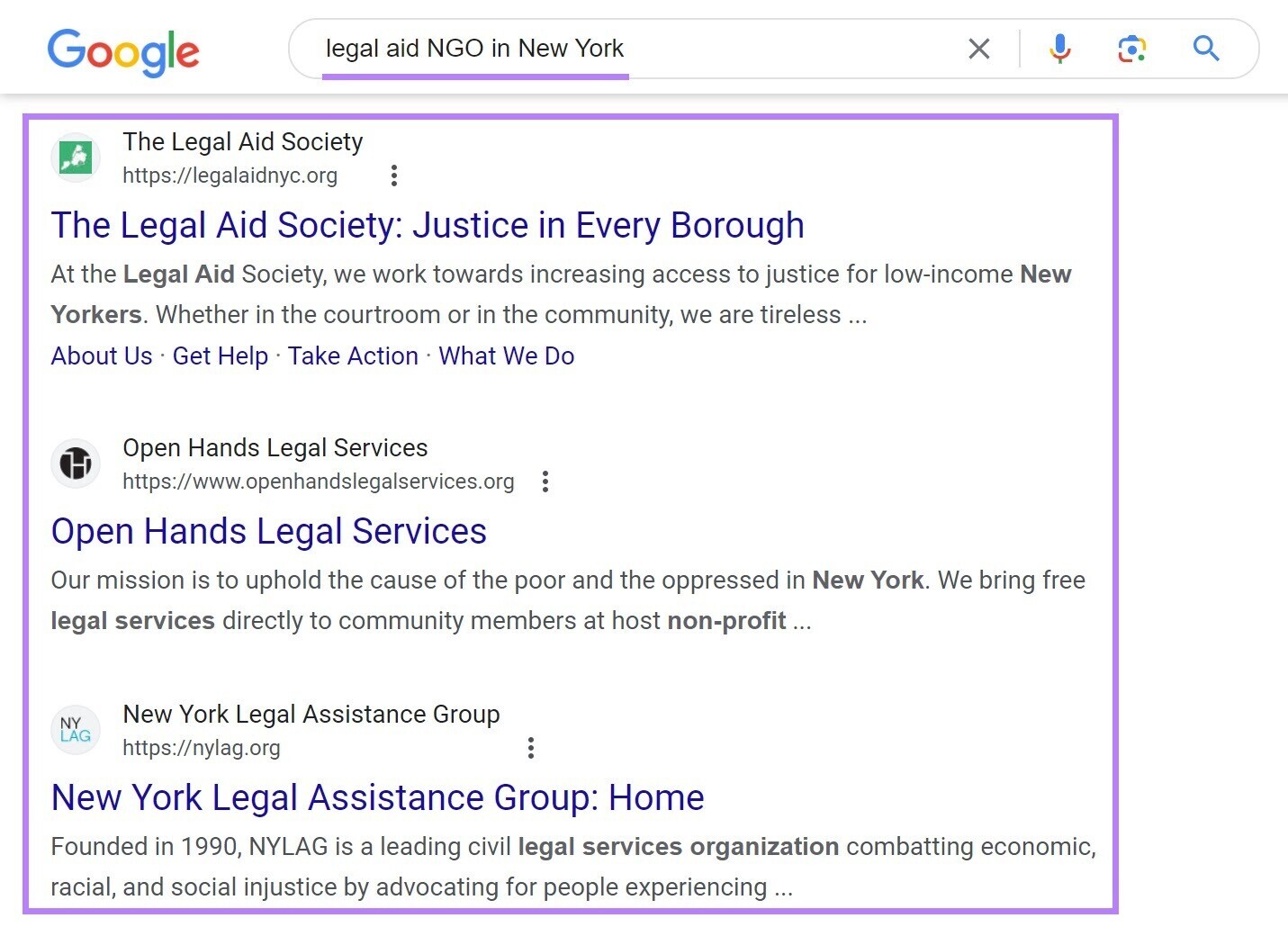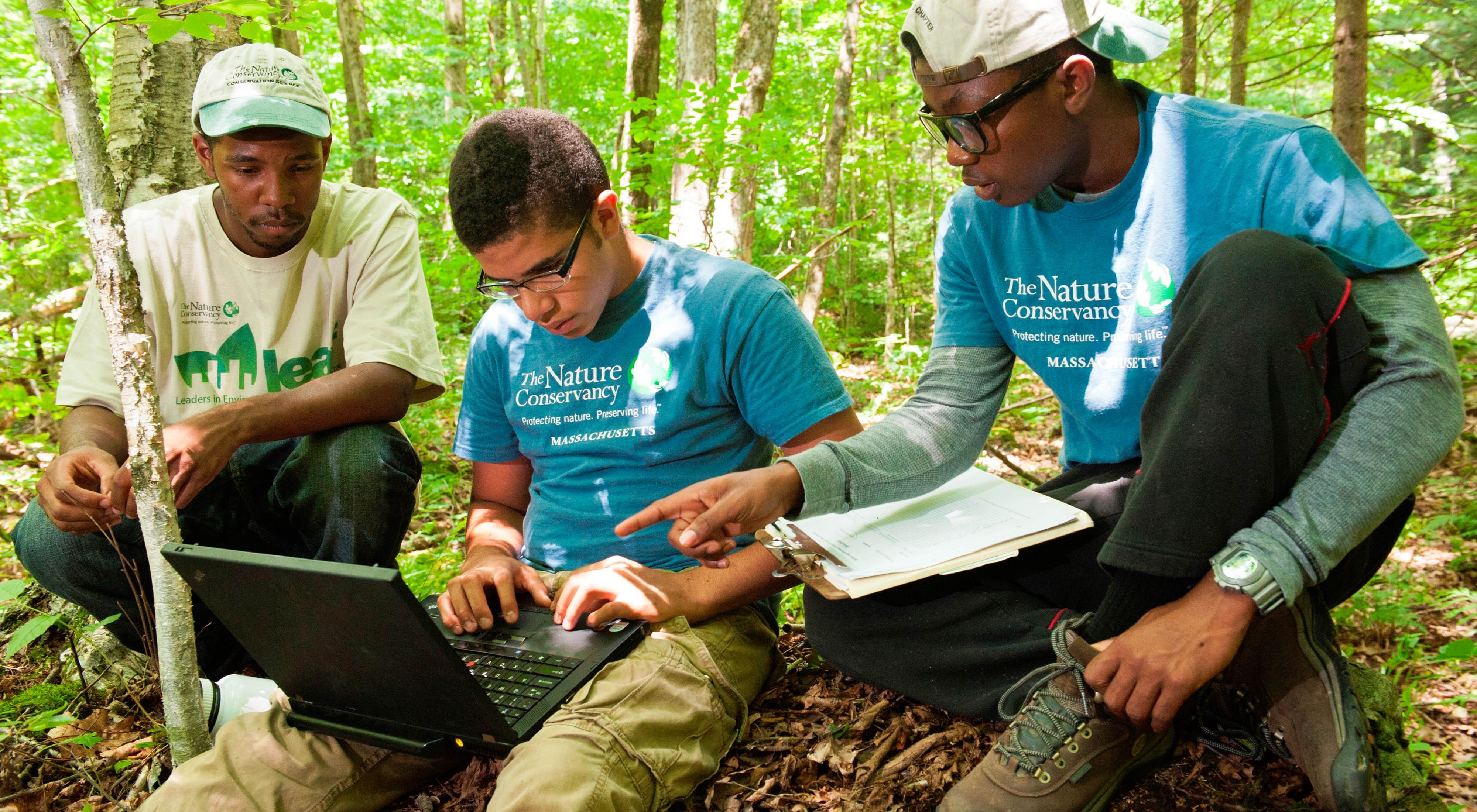I get it. You're stretched thin. Budgets are small, the to-do list is endless, and honestly, “SEO” sounds like just another buzzword to figure out when you'd rather be out there doing the real work. But hear me out: When people who care about your cause actually find you online, something magical happens. This blog dives into why SEO might just be the most overlooked tool in your nonprofit's toolkit.
Why Nonprofits Need to Conquer SEO (Beyond the Obvious)
Let's cut through the basics. We all know the standard spiel: SEO helps to increase website traffic, strengthens brand credibility, and offers (supposedly) cost-effective results. But I want to peel back the layers and explore why SEO holds truly profound implications for nonprofits.

Passionate Supporters are Searching: Your most ardent supporters don't simply stumble upon your cause. They're actively looking for ways to make a difference and seeking information related to issues they care about. A strong SEO strategy ensures your nonprofit stands out when these potential donors, volunteers, and advocates turn to search engines.
Leveling the Playing Field: Unlike traditional advertising where sheer budget often wins the day, SEO democratizes the online world. Even smaller nonprofits with limited resources can compete with larger, better-funded organizations if they employ the right SEO tactics. This means your valuable cause has a fighting chance to gain broader reach.
Mission Alignment: Organic search results cultivate deep trust with users. This trust aligns perfectly with the foundation upon which nonprofits are built. Optimizing your website to appear high in those search results translates to an implicit stamp of authority – signaling both relevance and reliability to your audience.

Success Stories: Seeing SEO in Action
The true power of SEO lies not in theory, but in tangible results. Let's examine some real-world case studies showcasing how nonprofits have harnessed SEO to achieve incredible outcomes:

Case Study #1: Charity: Water (Increased Donations)
Charity: Water, a well-known nonprofit committed to bringing clean water to communities in need, understood the transformative nature of visibility. With focused SEO efforts, they targeted search terms like “donate to clean water” and “water crisis”. These efforts resulted in a massive increase in organic traffic to their website. Increased traffic, bolstered by compelling storytelling about their mission, drove a corresponding spike in donations – ultimately allowing them to expand their reach and help more people in need.

Case Study #2: The Nature Conservancy (Improved Volunteer Recruitment)
The Nature Conservancy aimed to amplify its volunteer recruitment efforts. They employed a localized SEO strategy, optimizing their website and online presence for terms related to volunteering within specific regions and conservation projects. This resulted in potential volunteers connecting directly with local opportunities, streamlining the volunteer onboarding process, and making a tangible contribution to conservation efforts in their communities.

Case Study #3: Local Animal Shelter (Boosting Pet Adoptions)
Often smaller, local nonprofits require strategic resource allocation to maximize their impact. A local animal shelter tapped into SEO to increase its visibility for search terms related to pet adoptions within their geographical area. They optimized their website listings for adoptable pets using keyword-rich descriptions and focused image alt-text. These efforts significantly improved their search rankings and generated increased interest from those explicitly seeking to adopt within their community.

Going Beyond the Basics
It's one thing to mention SEO; it's another to know how to execute it effectively in the context of nonprofits. Let's dive into some tactics that yield significant results.
Keyword Research as a Mission Map: Don't simply guess what terms people are searching for. Invest in a comprehensive keyword research process that aligns with your specific programmatic areas and the issues your nonprofit addresses. Tools like SEMrush and Ahrefs can provide granular data to identify the search terms with the highest potential to connect you with your audience.
Content: The Currency of Connection: The adage “content is king” doesn't lose its luster in the nonprofit world. Develop content that informs, inspires, and resonates with your target audience. Think beyond static articles. Consider informative blog posts, impactful infographics, and even compelling videos that tell the human stories behind your missions.
Tell Your Location's Story: Embrace localized SEO, especially if your nonprofit relies on geographically based support. Optimize for “near me” searches. Craft location-specific content, and ensure your Google My Business profile is fully updated and uses keywords that speak to the local community.
Technical SEO: The Invisible Power Player: You can't ignore the backend. Make sure your website is crawlable by search engines. Use descriptive URLs, maintain a clean site architecture, and address any website speed issues. These technical details can significantly influence your visibility in search results.
Backlinks That Breathe Authority: Backlinks from other reputable websites signal to search engines that your site is trustworthy. Building these links might seem daunting, but it doesn't need to be overly complex. Explore partnerships with like-minded organizations for potential cross-linking opportunities. Offer compelling guest posts on relevant blogs within your sector. Reach out to local news outlets or online publications, highlighting newsworthy aspects of your nonprofit's activities.

Embracing Data-Driven SEO
SEO isn't about setting it and forgetting it. Continuous monitoring and optimization are crucial. Here's how to put data at the forefront of your strategy:
Google Analytics: Your Insight Engine: Dive deeply into Google Analytics to uncover where your traffic is coming from, which pages perform best, and the type of content that resonates most strongly. Look for patterns and use data to make informed adjustments to your SEO approach.
Google Search Console: Decoding Search Behavior: Search Console can be a goldmine of data. Examine the specific search queries that direct people to your website and analyze your average position on results pages. Use these insights to tailor content and refine keyword targeting.
Tracking Beyond Traffic: While a boost in website visits is crucial, don't lose sight of conversions. Keep track of actions beyond click-throughs, such as newsletter signups, volunteer form submissions, or online donations. Correlating traffic and SEO improvements with these crucial metrics helps to visualize the direct impact of your efforts.
In our online-driven world, SEO is incredibly valuable for nonprofits. Investing time and resources into SEO pays off significantly by increasing your organization's online visibility, enhancing its credibility, and expanding your supporter base. Don't let your important work get lost in the vast digital landscape. Use the power of SEO to amplify your mission and connect with a world seeking meaningful engagement opportunities.
As a marketing agency for nonprofits, we understand the unique challenges and benefits of mission-based marketing. Reach out to discuss how a customized SEO plan can boost your visibility and help you achieve your critical mission.
Let's make a difference – together.
FAQ
1. My nonprofit has such a small budget; is SEO even worth my time?
Absolutely! SEO is one of the most cost-effective strategies for building your organization's online visibility over time. Though you'll invest time and effort in content creation and optimization, SEO doesn't require the same direct ad spend needed for many other forms of marketing. With strategic thinking, even resource-strapped nonprofits can see real results from consistent SEO efforts.
2. What's the biggest difference between SEO for nonprofits and regular businesses?
While the mechanics of SEO are similar, nonprofits have a distinct advantage: mission-driven content. Focusing on keywords related to your cause, providing educational information, and telling the stories of your work naturally aligns with what search engines look for in quality content. Nonprofits may also find increased backlinking opportunities from local media and like-minded organizations eager to amplify your work.
3. I'm overwhelmed by SEO jargon. Where do I even start?
Start by focusing on understanding how your potential supporters or volunteers are searching. Think of the kinds of questions they might ask or needs they might express about your cause, then search those exact phrases yourself. Analyzing the results (including what competitors show up) gives you a baseline. Consider starting with a targeted list of 5-10 core keywords for your initial SEO focus.
4. Do I need to hire an expensive SEO consultant?
Not necessarily! While SEO agencies can provide deep expertise, there are fantastic free resources available to guide you through the basics. Do your research on beginner-friendly blogs and tutorials to master the fundamentals. As your budget or workload allows, consider bringing in external help for advanced tactics or technical audits of your website.
5. It seems like SEO results take forever. Is it really worth the long wait?
SEO is indeed a long game, especially for smaller nonprofits. Don't be discouraged if you don't see immediate spikes in traffic. Instead, focus on consistent work, track your progress over time, and celebrate incremental improvements. Think of SEO like planting seeds: with constant care, they'll grow into lasting results.
6. Besides my homepage, what other pages should I optimize?
Consider each key programmatic area or focus of your nonprofit as a potential SEO landing place. Focus on creating high-quality, optimized content (blogs, news articles, infographics, etc.) around these core concepts. Optimizing location-specific pages is particularly important for service-based nonprofits operating within a region.
7. Should I try to rank for really popular keywords related to my cause?
It's tempting, but often unrealistic for smaller nonprofits. Highly competitive keywords require immense effort to rank well. Instead, employ the “long tail” SEO approach: Focus on more specific, less competitive phrases (3-5 words) relating to your niche within the broader cause. For example, instead of “animal rescue,” aim for “senior dog adoption [your city]”.
8. Does Google offer anything specific to help nonprofits?
Yes! Google for Nonprofits is a program providing eligible organizations access to tools like the Google Ad Grant, GSuite for Nonprofits, and YouTube's Nonprofit Program. While not directly about SEO, these resources can bolster your digital presence and complement your overall SEO strategy.
9. How often do I need to update my website or SEO tactics?
SEO is an ongoing process. Search engine algorithms evolve, as do the behaviors of those seeking information about your cause. Regularly reassess your target keywords, create fresh content, and monitor your SEO performance using data from Google Analytics and Search Console. Aim for updates on some level at least quarterly.






